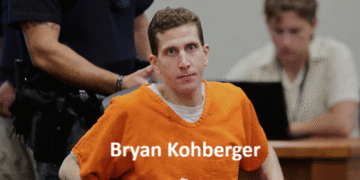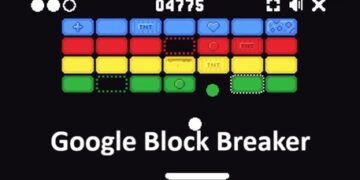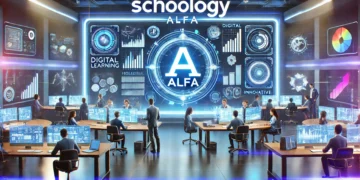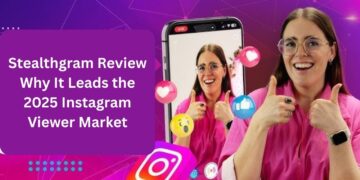Where We Stand Today
Picture this. A designer in Tokyo collaborates with an animator in Lagos while their client in New York watches changes happen in real-time. Science fiction? Nope. Just Tuesday in 2025.
The creative industries aren’t just evolving – they’re mutating at breakneck speed. What took Pixar months to render for Toy Story now happens in milliseconds on a decent laptop. But here’s where it gets interesting. We’re not just doing the same things faster. We’re doing things that were literally impossible five years ago. William Gibson hit the nail on the head: “The future is already here — it’s just not evenly distributed.”
Studios that once needed warehouse-sized render farms now achieve photorealistic results with cloud-based 3d-rendering solutions. Freelancers compete with agencies. Students create Hollywood-quality effects from dorm rooms. The playing field hasn’t just leveled – it’s been completely reimagined.
Emerging Technologies Reshaping Creativity
Real-Time Rendering Revolution
Remember waiting overnight for a single frame to render? Feels like discussing dial-up internet, doesn’t it? Real-time rendering isn’t coming – it’s here, and it’s flipping tables everywhere.
Game engines like Unreal and Unity broke out of their gaming sandbox. Now they’re powering:
- Film production (The Mandalorian, anyone?)
- Architectural walkthroughs
- Fashion shows
- Live concerts
- News broadcasts
The statistics speak volumes. Real-time rendering cuts production time by 40-60%. But that’s not the real story. The real story? Iteration without limitation. Change the lighting. Adjust the camera angle. Swap materials. All instant. All live. Creativity without coffee breaks.
AI as Creative Partner
Let’s address the elephant in the room. Will AI replace creative professionals? Short answer: no. Long answer: it’s complicated, but still no.
AI isn’t your replacement. It’s your intern on steroids. Need 50 variations of a concept? Done in seconds. Want to explore a style you’ve never tried? AI’s got your back. Stuck on a creative block? Your silicon buddy doesn’t know what those are.
By 2030, experts predict 70% of creative workflows will incorporate AI tools. Not replacing humans – amplifying them. Think of it like this. Calculators didn’t replace mathematicians. They freed them to tackle bigger problems. Same principle, different decade.
The Democratization of Professional Tools
Here’s something wild. A teenager with Blender and YouTube tutorials can now produce work that would’ve required a full studio team in 2010. Not kidding. The tools that cost hundreds of thousands? Many are now free or subscription-based.
This democratization creates interesting ripples:
- Talent emerges from unexpected places – Geography becomes irrelevant when tools are accessible everywhere
- Competition intensifies – When everyone has professional tools, skill and creativity become the only differentiators
- Collaboration explodes – Lower barriers mean more people contributing to creative projects
- Quality expectations skyrocket – When amazing work is everywhere, average doesn’t cut it anymore
- Specialization deepens – Generalists struggle as specialists with accessible tools dominate niches
Small studios in developing nations compete for Hollywood contracts. Instagram artists land gallery shows. The gatekeepers? They’re scrambling to stay relevant.
Virtual Worlds and the Metaverse Effect
Beyond Gaming
Forget everything you think you know about the metaverse. Strip away the hype, the failed promises, the cartoon avatars. What’s left? A fundamental shift in how we experience digital content.
Virtual showrooms where customers examine products that don’t exist yet. Architects walking clients through buildings before breaking ground. Fashion designers hosting shows in impossible locations – underwater catwalks, floating runways, gravity-defying presentations.
The market data backs this up. Digital visualization markets grow 22% annually. That’s not speculation bubble growth. That’s real businesses solving real problems with virtual solutions.
But here’s the twist nobody saw coming. Virtual experiences aren’t replacing physical ones. They’re creating appetite for them. See something amazing in VR? Now you want to experience it in reality. Digital visualization becomes the ultimate preview, the perfect teaser, the appetizer that makes you crave the main course.
Sustainable Creation Through Digital Innovation
Sustainability isn’t just a buzzword anymore. It’s a business imperative. And digital visualization? It’s leading the charge.
Consider traditional product development. Prototype after prototype. Material waste. Shipping samples globally. Carbon footprint through the roof. Now? Digital prototypes eliminate 90% of physical samples. Virtual fashion shows skip the travel. Architectural firms test environmental impact before pouring concrete.
Matt Mullenweg said, “Technology is best when it brings people together.” But maybe it’s even better when it brings people together without burning jet fuel.
The numbers tell the story:
- Virtual prototyping reduces material waste by up to 80%
- Digital showrooms cut travel-related emissions by 60%
- Cloud rendering uses 40% less energy than on-premise solutions
Creative industries aren’t just adopting sustainable practices. They’re pioneering them.
The Human Touch in a Digital Future
Here’s the paradox. The more digital our tools become, the more human creativity matters. Algorithms can generate. Machines can render. But they can’t feel. They can’t empathize. They can’t capture that ineffable something that makes art… art.
A photographer friend told me something interesting. “AI can perfect my images,” he said. “But it can’t tell me why I should take them.” That’s the crux of it. Tools amplify intent. They don’t create it.
The future of digital visualization isn’t about replacing human creativity. It’s about unleashing it. When technical barriers disappear, what remains? Pure creative vision. Raw artistic intent. The stuff machines can’t fake.
Think about the Renaissance. Did better paintbrushes diminish Da Vinci? Did improved canvas make Michelangelo obsolete? New tools, same human spark. Different century, identical principle.
We’re entering an era where:
- Technical skill becomes table stakes
- Creative vision becomes the differentiator
- Collaboration trumps competition
- Accessibility drives innovation
- Sustainability shapes decisions
The creative industries of 2030 won’t look like today’s. How could they? When rendering happens instantly, when AI handles grunt work, when virtual and physical merge seamlessly – everything changes. Except the need for human creativity. That just becomes more valuable.
Studios will be smaller but more powerful. Freelancers will tackle projects that required teams. Boundaries between disciplines will blur until they disappear. Animation, architecture, gaming, film – all converging into something new. Something we don’t have a name for yet.
Ready or not, this future’s arriving. The question isn’t whether digital visualization will transform creative industries. It’s whether you’ll help shape that transformation or watch it happen.
The tools are ready. The technology’s mature. The market’s hungry. All that’s missing? Your creative vision. Because at the end of the day, that’s still the one thing no algorithm can replace. The ability to imagine something that doesn’t exist – then make it real.
Welcome to the future of creative work. It’s digital, it’s democratized, and it’s waiting for you to define it.

















































































